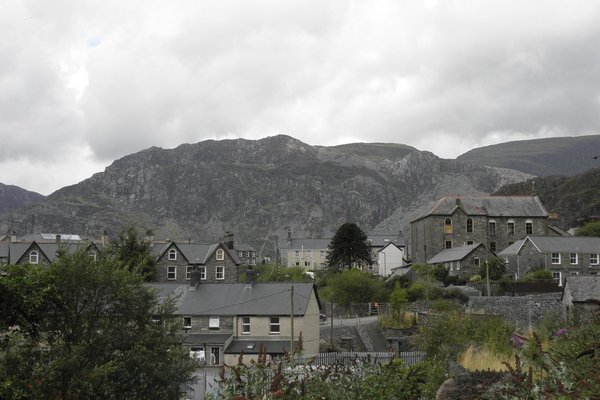United Kingdom
The Slate Landscape of Northwest Wales
The Slate Landscape of Northwest Wales is a stone quarrying and mining landscape that was transformed during the Industrial Revolution.
The slate industry has been present here from the Roman period onwards. It grew significantly in the 18th century before reaching its zenith in the 19th century, when these Welsh quarries provided roofing materials and slate products throughout the world. They also innovated the associated technologies of quarrying and transport infrastructure (such as narrow-gauge railways) were also exported worldwide.
Community Perspective: The site is made up of 6 locations, of which Dinorwic (for its museum, located in an authentic building, and other more remote remains) and Llechwedd Slate Caverns (for an underground visit) are recommended. Squiffy has provided a comprehensive overview of its values and has visited 5 locations.
Site Info
Official Information
- Full Name
- The Slate Landscape of Northwest Wales (ID: 1633)
- Country
- United Kingdom
- Status
-
Inscribed 2021
Site history
History of The Slate Landscape of Northwest Wales
- 2021: Inscribed
- Inscribed
- Type
- Cultural
- Criteria
- ii
- iv
Links
- UNESCO
- whc.unesco.org
- Official
-
- llechi.cymru — Nomination website
- Related
-
- dailypost.co.uk — Visit the great leaning wall of Snowdonia next to abandoned ‘wild and lawless’ village
All Links
UNESCO.org
- whc.unesco.org — whc.unesco.org/
Official Website
- llechi.cymru — Nomination website
Related Resources
- dailypost.co.uk — Visit the great leaning wall of Snowdonia next to abandoned ‘wild and lawless’ village
News Article
- Nov. 10, 2024 walesonline.co.uk — Historic building at Dinorwig Quarry torched
- Nov. 3, 2024 walesonline.co.uk — World Heritage Site 'trashed' by people climbing over it for Instagram pictures
- Aug. 19, 2024 theguardian.com — Museum restoration in Snowdonia will put slate back at centre of Welsh history
- Nov. 9, 2022 bbc.com — Historic 13C slate quarry allowed to expand
Community Information
- Community Category
- Cultural Landscape: Relict
Travel Information
Wales hotspot
Recent Connections
-
WHS with enclave
In components 1 and 2 (see for details)
-
Depot for artwork during war
During the Second World War "(...) the … -
Perfect Inscriptions
2021
Connections of The Slate Landscape of Northwest Wales
- Individual People
-
-
Thomas Telford
Bethesda "settlement follows the Thomas Telford post road constructed between 1817 and 1825" -
Queen Victoria slept here
Penrhyn Castle - "In 1859, Queen Victoria and Prince Albert stayed the castle during one of their rare visits to Wales. The queen, however, refused to sleep in the large bespoke slate bed that the Penrhyn family had specifically commissioned for this occasion as it reminded her of a tomb" She painted the view from her windowSee www.rct.uk
-
- Geography
-
-
Atlantic Ocean
Extends to the coast of the Irish Sea, a marginal sea of the Atlantic Ocean -
Straits
Port Penrhyn is situated on the Menai Straits -
Linear inscriptions
The Ffestionog and Tal-y Llyn railways
-
- Trivia
-
-
Minority communities
The maintenance of Welsh language and quarrying culture represents the adaptation of a traditional minority culture to modernity. (AB ev) -
Underground Boundaries
See Nomination maps for "Nominated property underground" in blue extending beyond the boundaries at the surface -
Zip Lines
Zip world slate caverns Festiniog -
Viewable from another WHS
From Beaumaris castle (Castles and Town Walls of King Edward in Gwynedd WHS) you can look across the Menai straits directly at the inscribed area around Port Penrhyn and Penhryn castle.
-
- History
-
-
Strikes
Great Penryn quarry strike - longest industrial dispute in British history from Nov 1900 for 3 years. -
Depot for artwork during war
During the Second World War "(...) the National Gallery did (...) keep its paintings safe by storing them underground, in an old slate mine in Manod, North Wales."See www.bbc.com
-
- World Heritage Process
-
-
Industrial Landscapes
-
WHS with enclave
In components 1 and 2 (see for details)
-
Perfect Inscriptions
2021 -
Part of Cultural nomination rejected
Bangor University was dropped from the final nomination document
-
- Religion and Belief
-
-
Protestantism
Numerous - the little village of "Bethesda" conains a "Jerusalem Chapel" (Built for "Calvanist Methodists" and now Welsh Presbyterian), "Bethania Chapel" and "Bethesda Chapel" (both Welsh Independent Congregational) and Christ Church (Anglican)
-
- Human Activity
-
-
Sea Ports
Port Penryn and Porthmadog -
Slavery
Penryn Castle was built originally by the 1st Baron Penryn using profits both from the slate mines and from his Jamaican sugar plantations. -
Stone Quarries
-
- Constructions
-
-
Pumping Stations
The hydro station operates using water pumped to higher levels at off peak times -
Water wheels
At the Dinorewic museum. 15.4 m in diameter. The largest in Britain -
Funiculars
"Llechwedd Deep Mine Tour which has the steepest narrow gauge railway in the UK and travels over 500 feet underground to the disused slate caverns" (wiki)See llechwedd.co.uk
-
Railways
Numerous old tramway routes and 3 operational railways. Llyn Padern, Ffedtioniog and Tal-y Llyn railway -
Tunnels
Numerous e. g Llechwedd Slate Caverns. Also in the underground Hydro power station -
Hydro Power Stations
Dinorewic pumped storage hydro power station.See en.wikipedia.org
-
Hospitals
Dinorewic Quarry hospital museum... Paid for by the slate workersSee www.penmorfa.com
-
- WHS on Other Lists
-
-
Located in a TCC Territory
Wales -
European Route of Industrial Heritage
National Slate Museum World Heritage SiteSee www.erih.net
-
Cultural WHS set within an IUCN recognised protected area
Most of the site is set within Snowdonia National Park (IUCN category V)
-
- Timeline
-
-
Built in the 18th century
From the end of the 18th century and throughout the 19th century, capital investment and the strategic access to the bay of Liverpool in the north and the Irish Sea in the west enabled the expansion of Welsh slate production and export to England, Ireland, and France. (AB ev)
-
- WHS Hotspots
-
-
Wales hotspot
Blaenau Ffestiniog is 50 miles from the Wrexham
-
- Science and Technology
-
-
Steam technology
Numerous - e.g "Iconic Cornish Beam engine of 1904-5 at Dorothea Slate Quarry" and "A classic steam powered aerial ropeway system know as a "Blondin" after the famous tightrope walker" (Nom File) -
Mines which can be visited underground
Llechwedd Slayte caverns
-
News
- walesonline.co.uk 11/10/2024
- Historic building at Dinorwig Quar…
- walesonline.co.uk 11/03/2024
- World Heritage Site 'trashed' by p…
- theguardian.com 08/19/2024
- Museum restoration in Snowdonia wi…
Recent Visitors
Visitors of The Slate Landscape of Northwest Wales
- Adam Hancock
- Adrian Turtschi
- Alexander Lehmann
- Alex Goh
- alicemears
- Ana Lozano
- Andrew_Kerr
- Anne
- Argo
- Ask Gudmundsen
- Badwater
- BJGreasly
- Bram de Bruin
- Caspar
- CeeCeeSR
- ChrisN
- Christian Wagner
- christof
- Christravelblog
- Claire Bradshaw
- ClaraHH
- Damientournay
- Daniel Chazad
- Danny L
- Digits
- Dimitar Krastev
- Dorejd
- Dr. Caligari
- Elf21
- Ellen Nielsen
- Elliot
- Els Slots
- Erik G
- Erik Jelinek
- Errol Neo
- Fan Yibo
- finsbury_jo
- Gabbro
- Garry Jackson
- George Gdanski
- GeorgeIng61
- Hubert
- Ian Cade
- Ilya Burlak
- IreneKD
- Jakob F.
- James Bowyer
- Janina Lehmann
- Jan-Willem
- Jay T
- Jesse S 2010
- Jonas Kremer
- KarenBMoore
- Kevin247
- kutasp
- Lara Adler
- Laurine
- Lithobates
- Luboang
- lucyannesmith
- Luis Filipe Gaspar
- Luj3904
- lynnz317@aol.com
- Maciej Gil
- Matthewsharris
- MH
- Mikko
- Ming_9734
- Neil McPaul
- Niall Sclater
- opperpco3
- PabloNorte
- Pat Martin
- Patrik
- Paul Schofield
- Peter Lööv
- Philipp Leu
- Piotr Wasil
- pressdm
- Randi Thomsen
- Roger Ourset
- Roman Bruehwiler
- Rudegirl
- Samy G
- sbshipway
- Solivagant
- Squiffy
- Squire Sullen
- Stanislaw Warwas
- Stijn
- Sturuss
- Sutul
- Svein Elias
- Taotao Chen
- Tarquinio_Superbo
- Tatiana Nikulnikova
- Tevity
- TheDarlingLife
- Thomas Buechler
- Thomas Harold Watson
- tony0001
- Tsunami
- usagi1974
- VLabhard
- V&M
- Waters88
- Wojciech Fedoruk
- zinar7
- Zoë Sheng
Community Reviews
Show full reviews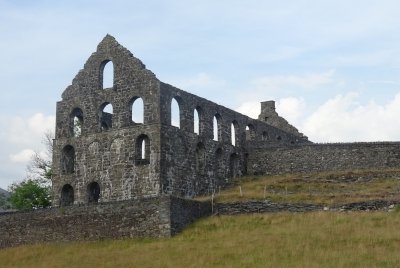
The single-track road to Cwm Ystradllyn wound further into the contours of the Welsh hills, the cottages and farmhouses becoming fewer and further apart with every bend. It was as if the terrain itself was muffling the intrusion of the modern world. A low rusted gate hung apologetically by a wooded dell through which a stream tinkled; it squeaked as I pushed it open. Cast-off shards of loose slate, as grey as a pigeon’s back, clinked sonorously beneath my feet as I climbed to slope. And there, at the top, surveying the wild moors, stood a towering structure. Four strong walls, three storeys high, punctured by rows of romanesque arched windows, only its roof missing. Nesting birds twittered from the gables and nodding glacier-blue harebells blanketed its foundations. The entire spectacle resembled a medieval Cistercian abbey. But what abbey would have a millrace cut into its floor for a towering but long-gone waterwheel? And what abbey would have a curving embankment, the remnants of a vanished rail line, climbing up to the second story? Abandoned and isolated on the moors, the ruin of the Ynysypandy Mill told its own story about the 19th century boom and bust that momentarily transformed the rugged and sparsely-inhabited mountains of northwestern Wales into the world’s main source for a very in-demand material: slate.
The UK has a rich and varied history. You might not realise that from looking at its UNESCO properties. By my reckoning The Slate Landscape of Northwest Wales is now …
Keep reading 0 comments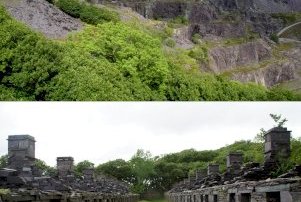
“To steal a mountain” was the title of the introductory film in the National Slate Museum in Llanberis. And if you look at the mountainside above Llyn (Lake) Peris, you understand how this is meant: the Dinorwic quarry gapes like a giant wound in the scenic landscape of the Snowdonia Mountains. I was torn between two opinions. On the one hand: the slate industry is not yet represented on the WH list, and Wales has a large number of original remains to fill this gap. So clearly pro inscription. But on the other hand: Should this ugly industrial landscape really be preserved? Or should we hope nature recaptures all of this as soon as possible?
The Slate Industry of North Wales is scheduled for nomination in 2021. In May 2017 we spent five days in Llanberis. Our main goal was to hike in Snowdonia National Park, but there was also enough time to visit some sites of the slate industry. There is not much left in Llanberis from the heyday of the slate industry. Today the village at the foot of Snowdon summit is a centre for hikers and other outdoor activities in the national park.
The National Slate Museum was a good introduction to the topic of slate production. The museum is located at the former workshops of the Dinorwic quarry. Most interesting was the demonstration how the slate was splitted and cut to roofing shingles.At the roundabout not far from the Slate Museum, a zigzag trail …
Keep reading 0 commentsThomas Harold Watson
The Slate Landscape of Northwest Wales
The Slate Landscape of Northwest Wales (Inscribed)
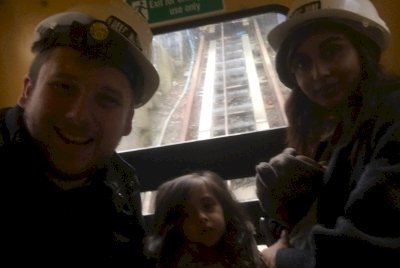
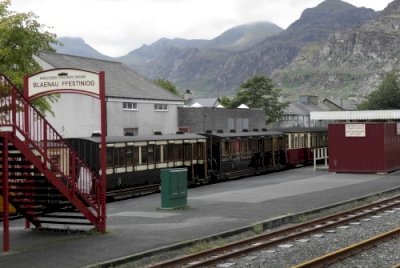
The Slate Landscape of Northwest Wales is the UK’s nomination for 2021. It will be a serial site with 7 components. Each of the components consists of a number of ‘elements’ – the most noteworthy “physical features which embody the attributes of Outstanding Universal value”. That value is to be found in (ii) the technology transfer to continental Europe and the USA, (iv) the dramatic impact of large-scale exploitation of natural resources and (v) the legacy of the industrial workers and their settlements. Its official name has been changed from “Slate Industry ..” to “Slate Landscape”, obviously emphasizing the cultural landscape approach.
I visited one of the components, the town of Blaenau Ffestiniog, on my way to the Gwynedd Castles in 2011. I’ve got a couple of photos left, but I must admit that I did not write up anything about the side trip and I can remember almost zero. What I see when I look at those photos again is a town that could only be in the UK: straight rows of similar stone houses (cheap housing for the quarrymen), a fish and chip shop, an Anglican church (they call it “Church of Wales” over here), a WWI memorial. It is surrounded by steep natural hills and man-made waste dumps. All photos appear to be taken in black-and-white as grey is the prominent colour of it all (including of course the slate roofs).
At the center of the town lies a railway station, which is the terminus …
Keep reading 0 commentsJakob F.
The Slate Landscape of Northwest Wales by Jakob Frenzel
The Slate Landscape of Northwest Wales (Inscribed)
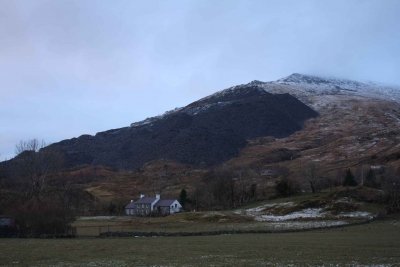
March 2018 - In the afternoon we reached Snowdonia. Amazing Nationalpark and still covered in snow.
All houses in the valleys were covered with slate and even the walls were made from slate. Certainly an important raw material in that area and we learned Wales is the biggest exporter of slate. We took a short hike along Dinorwic Workings and discovered the impact of the industry here.
Next morning we still visited Bangor University.
Keep reading 0 commentsSolivagant
The Slate Landscape of Northwest Wales
The Slate Landscape of Northwest Wales (Inscribed)
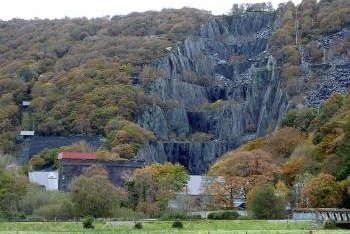
I don’t normally review sites from UK but, having just returned from a visit to the “Slate Industry of N Wales” T List site, I was surprised to note that it has not yet been reviewed at all. Since it is relatively easy to take in whilst visiting Gwynedd Castles and Pontcysyllte Aqueduct, WHS travellers might find the following info of use.
Just as S Wales is synonymous with “Coal”, N Wales is significantly linked to “Slate”. In the 19th C, Welsh slate roofed the burgeoning housing of London and elsewhere in UK and was also exported around the World - peak production was around 1831-78. Nowadays only some small scale production continues. The 7 areas identified for possible inscription follow a pattern set by the Devon/Cornwall mining site WHS - a number of mines, together with some towns/villages, often in the form of a cultural landscape, a port and some railways. For good measure add a 19th C Industrialist’s stately home and a university founded for the working class. These are scattered across N Wales and you will have to decide where to put your time and effort! It is perhaps worth mentioning a couple of things about slate extraction – first it can be carried out “open cast” in quarries or underground in mines. Both are represented within the 7 areas – our choice was to see an open cast example. These are spectacular in size when viewed in terms of the technology available and the humans …
Keep reading 0 comments
